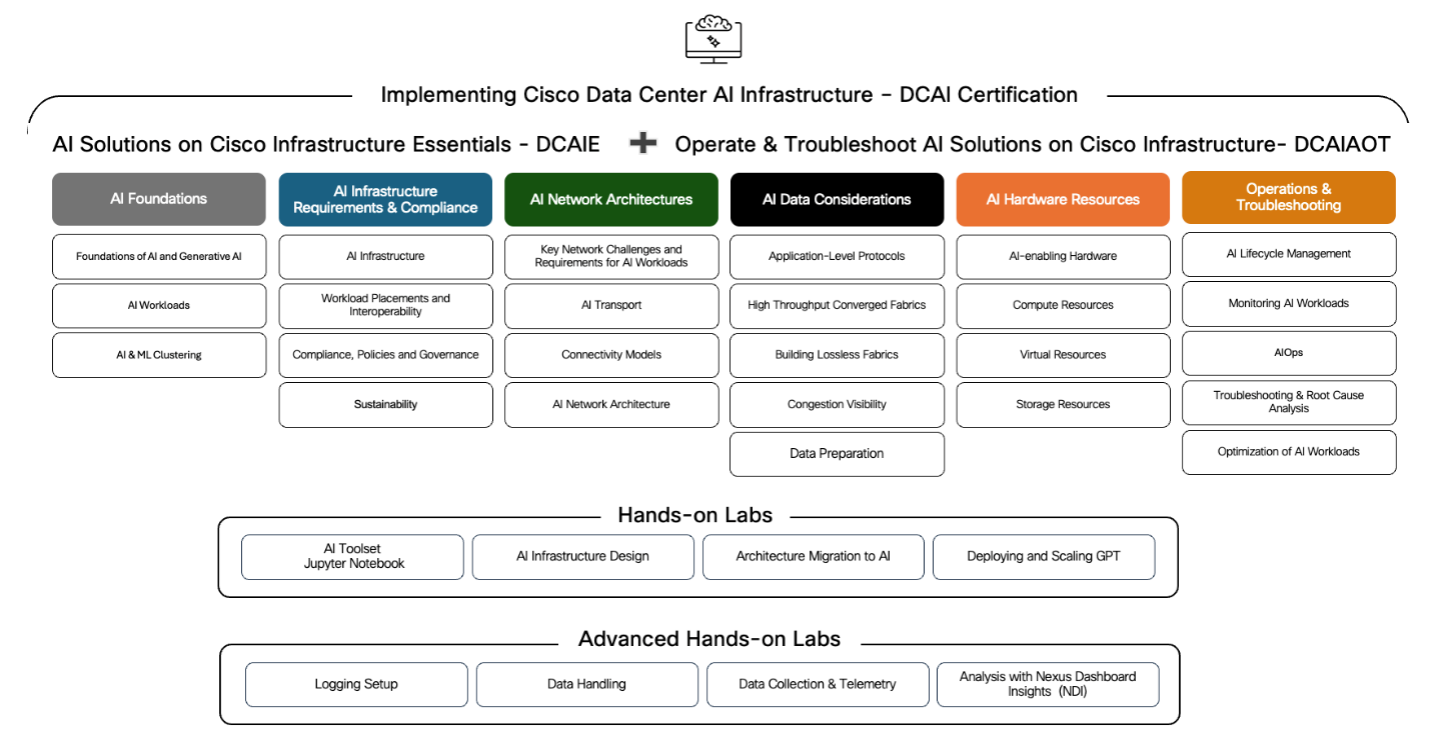As artificial intelligence (AI) moves from the lab to the enterprise, a critical reality is emerging: the infrastructure that powers it is fundamentally different. AI and machine learning (ML) workloads are not like traditional applications.
They demand:
- Immense computational power: Delivered by specialized accelerators like GPUs that can process parallel computations at a scale far beyond standard CPUs.
- Ultra-fast, low-latency networking: Required to connect large clusters of accelerators for distributed training, where any network bottleneck can bring a multi-million dollar AI investment to a standstill.
- Sophisticated orchestration: Needed to manage and schedule complex jobs across a pool of specialized hardware, ensuring maximum utilization and efficiency.
This has created an unprecedented demand for technical professionals who can design, deploy, and manage these highly specialized data center environments. To meet this demand, Cisco has introduced a new AI certification designed to validate the skills needed to excel in the age of AI. For architects and engineers building this critical backbone, the Implementing Cisco Data Center AI Infrastructure (DCAI) certification is your path to becoming an indispensable expert.
Let’s explore what the DCAI certification entails and how it can accelerate your career.
What is the DCAI certification?
The Implementing Cisco Data Center AI Infrastructure (DCAI) certification is designed for the technical infrastructure community; IT and network engineers, solutions architects, and technical leads who are on the front lines of the AI revolution. It focuses on the critical skills needed to build, deploy, and operate the robust, scalable infrastructure that underpins AI solutions.
To prep for the certification exam, you should complete these two Learning Paths:
These Learning Paths provide the structured knowledge and hands-on expertise required to pass the DCAI certification exam.
What core skills will you obtain?
When you complete the above two Learning Paths, you’ll gain deep, practical expertise in the most in-demand areas of AI infrastructure.
You’ll learn to:
- Design AI/ML compute clusters and optimize models: Examine the components and use cases of AI/ML compute clusters, develop and optimize custom AI models, and fine-tune pre-trained models for maximum performance and efficiency.
- Implement high-performance networks for AI/ML: Identify the key characteristics of high-performance networks for AI workloads—including bandwidth, latency, and resiliency—and maintain visibility using advanced tools such as Cisco Nexus Dashboard Insights.
- Master AI hardware and compute resources: Review essential AI/ML hardware (CPUs, GPUs, DPUs, SmartNICs, Cisco UCS), understand GPU sharing technologies like MIG and vGPU, and explore compute solutions such as HCI and specialized AI orchestration platforms like Run:ai.
- Develop multicloud and workload mobility strategies: Implement workload mobility, evaluate effective multicloud strategies for AI, and mitigate the risks of vendor lock-in.
- Integrate Green AI and cost optimization: Understand Green AI principles, optimize costs across the entire AI lifecycle, and leverage AI accelerators (GPUs, TPUs, DPUs) alongside efficient power and cooling strategies.
- Apply AIOps principles for operational excellence: advanced incident detection, predictive analytics, root-cause analysis, and automation to ensure continuous improvement in AI operations.


Are you ready to become an AI infrastructure expert?
The new DCAI certification represents Cisco’s commitment to empowering the engineers and architects who are building our AI-driven future. This is your opportunity to move beyond theory and gain the hands-on skills to lead in this exciting field.
Get ready for DCAI certification
Testing for the 300-640 DCAI certification exam begins February 9, 2026.
Download exam topics
Sign up for Cisco U. | Join the Cisco Learning Network today for free.
Learn with Cisco
X | Threads | Facebook | LinkedIn | Instagram | YouTube
Use #CiscoU and #CiscoCert to join the conversation.